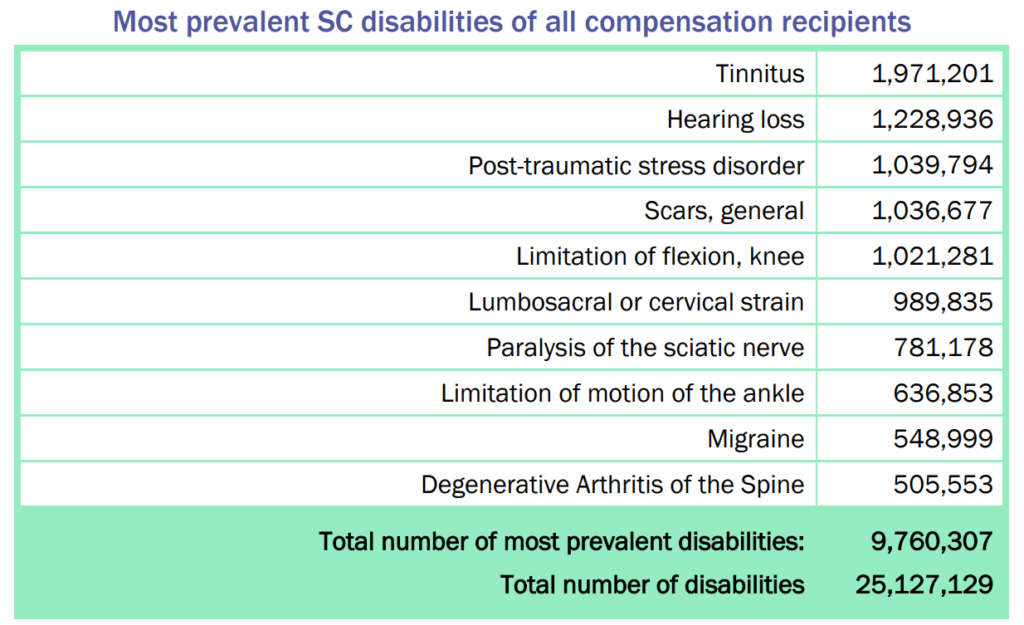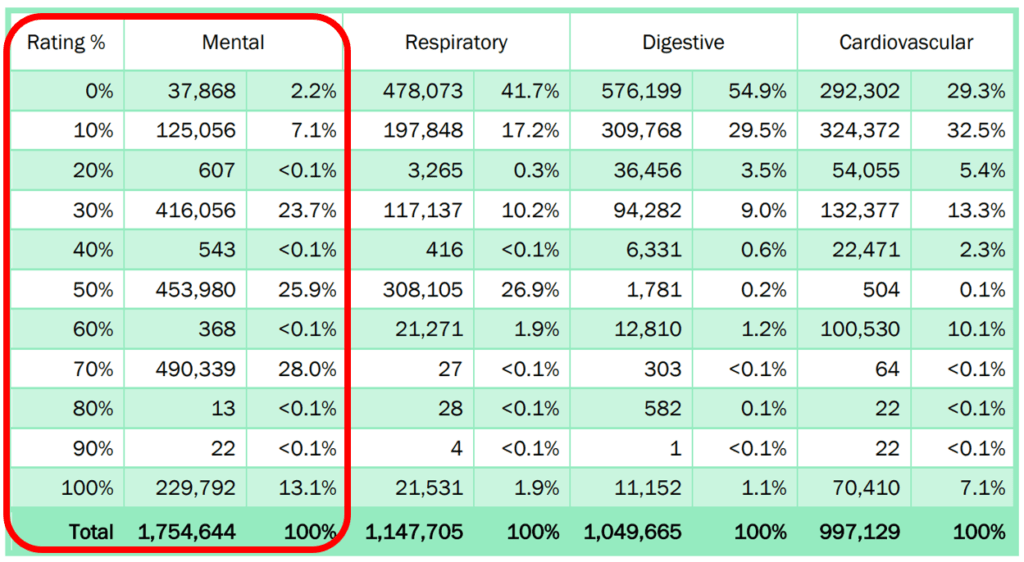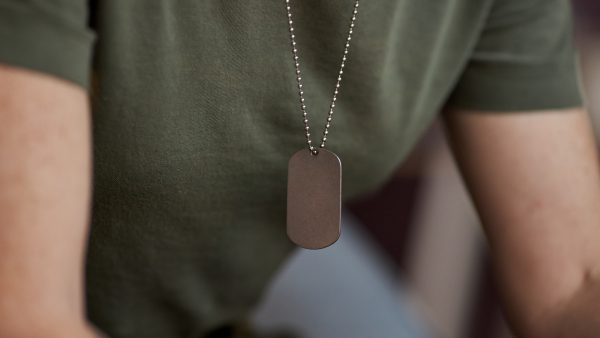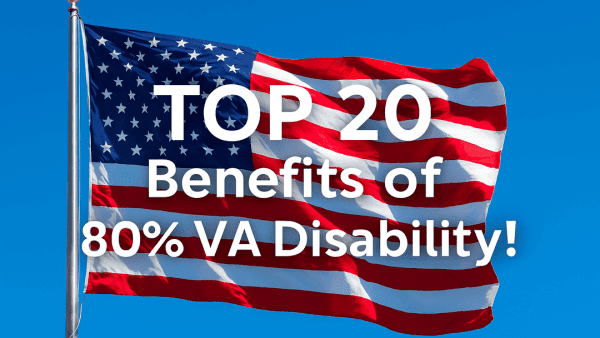Looking for Expert-Level VA Claim Answers?📱Call Us Now! 737-295-2226
While PTSD VA rating statistics vary, it is estimated that veterans are FOUR times (4x) as likely to have PTSD compared to those who didn’t serve in the military.
A veteran’s PTSD VA rating is determined by your level of occupational and social impairment over time.
This subjective assessment is made by the VA Rater or RVSR, who reviews all your military personnel records, service treatment records, VA medical records, private medical records, personal statements, buddy letters, and the results of your C&P exam for PTSD to determine your final VA rating for PTSD.
Click HERE now to learn How to File a VA Claim for PTSD.
How Many Veterans Have PTSD?
According to the Department of Veterans Affairs, the prevalence of combat related Post Traumatic Stress Disorder among Veterans depends on which conflict a service member was involved with.
- About 11 to 20 out of every 100 veterans (or between 11% and 20%) who served in operations Iraqi Freedom and Enduring Freedom have PTSD each year.
- About 12 out of every 100 Gulf War Veterans (or 12%) have PTSD each year.
- About 15 out of every 100 Vietnam veterans (15%) were currently diagnosed with PTSD when the most recent study of them (the National Vietnam Veteran Readjustment Study) was conducted in the late 1980s. It’s believed that 30% of Vietnam veterans have had PTSD in their lifetime.
How Many Veterans Have PTSD MST?
Sadly, another common cause of non-combat PTSD in the military is referred to as PTSD MST, which stands for Military Sexual Trauma (MST).
Click HERE to learn How to Prove Your PTSD Non Combat Stressor!
This is any form of sexual harassment or sexual assault that occurs on active duty.
MST can happen to both men and women and can occur during peacetime, training, or war.
Among veterans who use VA health care, it is reported that:
- 23 out of 100 women (or 23%) reported sexual assault when in the military.
- 55 out of 100 women (or 55%) and 38 out of 100 men (or 38%) have experienced sexual harassment when in the military.
There are many more male veterans than there are female veterans.
However, even though military sexual trauma is more common in women Veterans, over half of all veterans with military sexual trauma are men.
Click HERE to learn How to File a VA Claim for MST PTSD
What is the average VA disability rating for PTSD?
According to the VBA’s statistics reported to congress, PTSD was the #3 most commonly claimed VA disability, with 1,753,091 veterans (of 4,743,108) receiving VA compensation having a service-connected PTSD VA rating at 0 percent or higher.
The Top 10 Most Common VA Disability Claims chart is shown below:

Okay, now let’s dig into some VA PTSD statistics.
The average (mean) VA disability rating for PTSD is between 50 percent and 70 percent, with 53.9% of veterans being rated between 50% and 70%.
VA Claims Insider considers mental health conditions to be a high-value VA disability claim, meaning conditions such as PTSD have a high likelihood of being rated at 30 percent or higher.
Of all veterans with service-connected mental health conditions, the most prevalent PTSD VA ratings are shown here:
- 37,868 veterans (2.2% of claimants) have a 0 percent VA rating for PTSD
- 125,056 veterans (7.1% of disabled veterans) have a 10 percent VA rating for PTSD
- 416,056 veterans (23.7% of veterans) have a 30 percent PTSD VA Rating
- 453,980 veterans (25.9%) have a 50 percent PTSD rating
- 490,339 veterans (28% of claimants) have a 70 percent VA disability rating for PTSD
- 229,792 veterans (13.1% of veterans with PTSD) have a 100 percent VA disability rating for PTSD

Thus, 90.7% of veterans with service-connected PTSD have a 30 percent rating or higher.
The most common VA disability rating for PTSD is at the 70 percent level, which has very severe occupational and social impairment symptoms such as:
Occupational and social impairment, with deficiencies in most areas, such as work, school, family relations, judgment, thinking, or mood.
Symptoms of the 70 percent VA rating for PTSD include some or all the following:
- Suicidal ideation
- Obsessional rituals which interfere with routine activities;
- Speech intermittently illogical, obscure, or irrelevant;
- Near-continuous panic or depression affecting the ability to function independently, appropriately and effectively;
- Impaired impulse control (such as unprovoked irritability with periods of violence);
- Spatial disorientation;
- Neglect of personal appearance and hygiene;
- Difficulty in adapting to stressful circumstances;
- Inability to establish and maintain effective relationships
What are symptoms of PTSD in veterans?
Veterans with PTSD have intense, distressing thoughts and feelings related to their stressful experience that last long after the traumatic event has ended.
They may relive the event through flashbacks or nightmares; they may feel sadness, fear or anger; and they may feel detached or estranged from other people.
Veterans with PTSD may avoid situations or people that remind them of the traumatic event, and they may have strong negative reactions to something as ordinary as a loud noise, accidental touch, certain smells, or crowds of people.
According to the American Psychiatric Association, symptoms of PTSD in veterans generally fall into four categories:
- Intrusive thoughts such as repeated, involuntary memories; distressing dreams; or flashbacks of the traumatic event. Flashbacks may be so vivid that people feel they are re-living the traumatic experience or seeing it before their eyes.
- Avoiding reminders of the traumatic event may include avoiding people, places, activities, objects and situations that bring on distressing memories. People may try to avoid remembering or thinking about the traumatic event. They may resist talking about what happened or how they feel about it.
- Negative thoughts and feelings may include ongoing and distorted beliefs about oneself or others (e.g., “I am bad,” “No one can be trusted”); ongoing fear, horror, anger, guilt or shame; much less interest in activities previously enjoyed; or feeling detached or estranged from others.
- Arousal and reactive symptoms may include being irritable and having angry outbursts; behaving recklessly or in a self-destructive way; being easily startled; or having problems concentrating or sleeping.
PTSD often occurs with other related mental health conditions, such as depression, substance abuse, memory problems, and other physical problems.
For veterans with PTSD, the symptoms can cause significant distress or problems functioning, which in VA speak means “occupational and social impairment.”
What is the PTSD rating scale?
PTSD VA claims are rated on a scale from 0 to 100, with breaks at 10 percent, 30 percent, 50 percent, and 70 percent.
Your current PTSD symptoms and your level of occupational and social impairment is what determines your final VA rating for PTSD.
Veterans can use the following PTSD rating scale to help in writing your Statement in Support of a Claim for PTSD:
0 percent PTSD rating criteria
A mental condition has been formally diagnosed, but symptoms are not severe enough either to interfere with occupational and social functioning or to require continuous medication.
10 percent PTSD rating symptoms
Occupational and social impairment due to mild or transient symptoms which decrease work efficiency and ability to perform occupational tasks only during periods of significant stress, or symptoms controlled by continuous medication.
30 percent PTSD rating symptoms
Occupational and social impairment with occasional decrease in work efficiency and intermittent periods of inability to perform occupational tasks (although generally functioning satisfactorily, with routine behavior, self-care, and conversation normal), due to such symptoms as: depressed mood, anxiety, suspiciousness, panic attacks (weekly or less often), chronic sleep impairment, mild memory loss (such as forgetting names, directions, recent events).
50 percent PTSD rating criteria
Occupational and social impairment with reduced reliability and productivity due to such symptoms as: flattened affect; circumstantial, circumlocutory, or stereotyped speech; panic attacks more than once a week; difficulty in understanding complex commands; impairment of short- and long-term memory (e.g., retention of only highly learned material, forgetting to complete tasks); impaired judgment; impaired abstract thinking; disturbances of motivation and mood; difficulty in establishing and maintaining effective work and social relationships.
70 percent PTSD rating symptoms
Occupational and social impairment, with deficiencies in most areas, such as work, school, family relations, judgment, thinking, or mood, due to such symptoms as: suicidal ideation; obsessional rituals which interfere with routine activities; speech intermittently illogical, obscure, or irrelevant; near-continuous panic or depression affecting the ability to function independently, appropriately and effectively; impaired impulse control (such as unprovoked irritability with periods of violence); spatial disorientation; neglect of personal appearance and hygiene; difficulty in adapting to stressful circumstances (including work); inability to establish and maintain effective relationships.
100 percent PTSD rating criteria
Total occupational and social impairment, due to such symptoms as: gross impairment in thought processes or communication; persistent delusions or hallucinations; grossly inappropriate behavior; persistent danger of hurting self or others; intermittent inability to perform activities of daily living (including maintenance of minimal personal hygiene); disorientation to time or place; memory loss for names of close relatives, own occupation, or own name.
How do I increase my PTSD rating?
In our experience, many veterans are underrated for PTSD or simply have never filed a VA claim for PTSD.
This means veterans do not have the PTSD VA rating they deserve.
The most common reason is that veterans are not honest with the VA about how your PTSD is limiting or affecting your life in negative ways.
The best way to increase your PTSD rating is to be uncomfortably vulnerable when talking to your VA healthcare provider, to include the C&P examiner, because ultimately, your level of occupational and social impairment determines your final VA rating for PTSD.
We also recommend doing an independent psychological evaluation with a U.S. board certified psychologist, who will complete a PTSD DBQ, make or confirm a diagnosis of PTSD, document how your PTSD was caused or made worse by your active duty military service to help prove service connection, and document your current mental health symptoms.
The PTSD DBQ can then be uploaded to VA.gov to help support your VA disability claim.
3 Tips for Your C&P Exam for PTSD
How to get a PTSD DBQ completed quickly
?? Dear Veteran, do you need a VA DBQ or Medical Nexus Letter to help service connect your VA disabilities?
? Join VA Claims Insider Elite, get instant access to the ELITE Experience Portal (EEP) and $7,500 worth of proprietary VA claim resources TODAY, and have our medical team get started on your PTSD VA claim for FREE:
Become an Insider
We’re Veterans helping Veterans Worldwide™, and since 2016 we’ve helped 10,000+ Veterans just like you INCREASE their VA disability rating!
About the Author

Brian Reese
Brian Reese is a world-renowned VA disability benefits expert and the #1 bestselling author of VA Claim Secrets and You Deserve It. Motivated by his own frustration with the VA claim process, Brian founded VA Claims Insider to help disabled veterans secure their VA disability compensation faster, regardless of their past struggles with the VA. Since 2013, he has positively impacted the lives of over 10 million military, veterans, and their families.
A former active-duty Air Force officer, Brian has extensive experience leading diverse teams in challenging international environments, including a combat tour in Afghanistan in 2011 supporting Operation ENDURING FREEDOM.
Brian is a Distinguished Graduate of Management from the United States Air Force Academy and earned his MBA from Oklahoma State University’s Spears School of Business, where he was a National Honor Scholar, ranking in the top 1% of his class.




